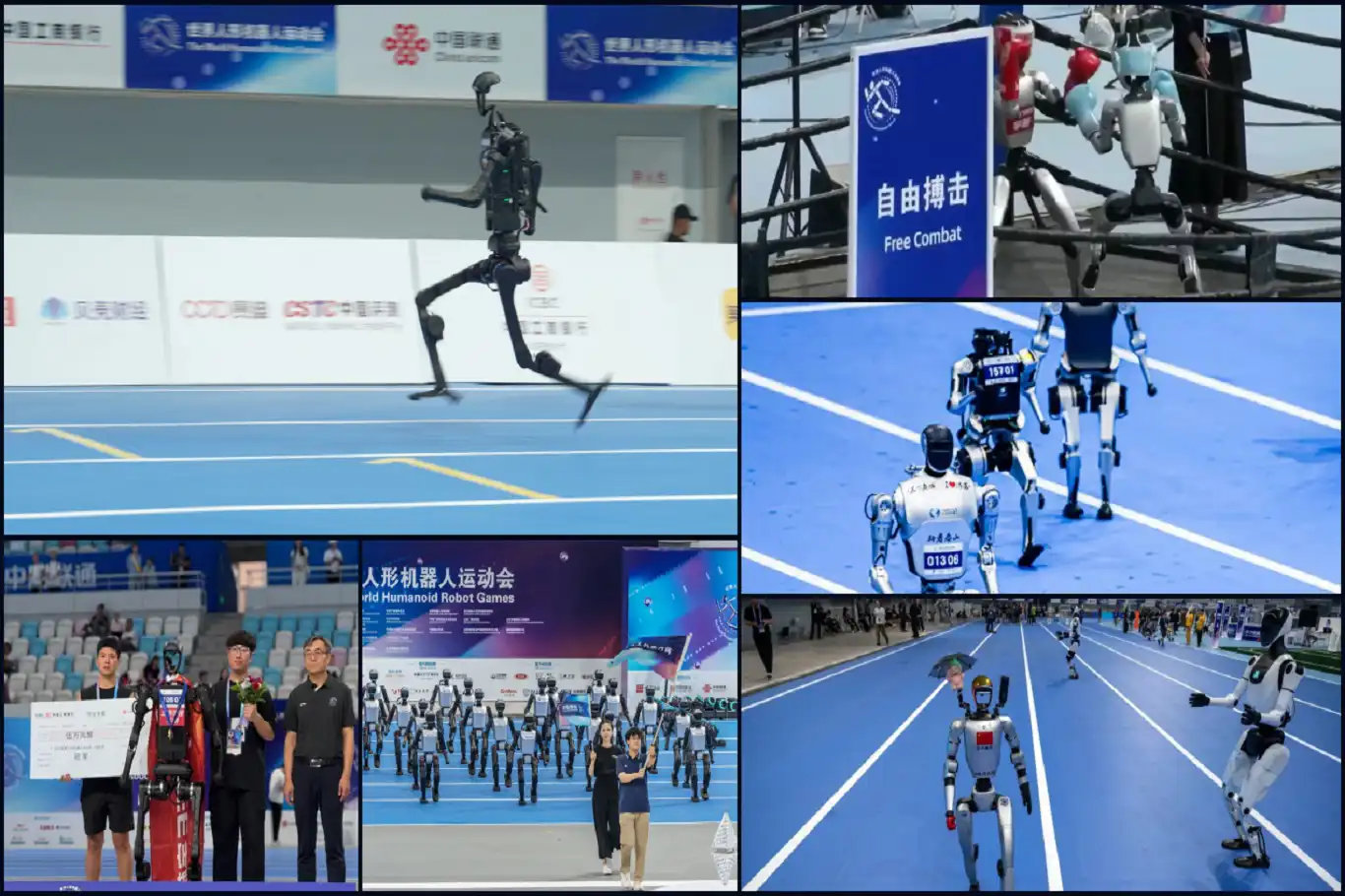The world witnessed a spectacular blend of innovation and human curiosity as Beijing hosted the first ever humanoid robot competition in August 2025. Over 500 humanoid robots from 280 teams across 16 countries participated in a variety of events, including sprinting, soccer, and martial arts demonstrations.
While the robots showcased remarkable advancements, the competition also highlighted the technological limitations of current humanoid machines. The opening ceremony of the humanoid robot competition was both inspiring and entertaining.
Robots performed choreographed dance routines, martial arts displays, and musical performances drawing cheers from the packed audience. However, one robot stole the spotlight not for its flawless moves, but for an unexpected face plant during a martial arts demonstration.
Two human assistants had to remove it from the stage, a moment that symbolized both the progress and the challenges in humanoid robotics.
Audience members shared mixed emotions, laughing at the mishap while marveling at the ingenuity behind the machines. This incident became a talking point, showing that while robots can impress, their reliability in complex tasks still has a long way to go.
Highlights from the Competition
The humanoid robot competition featured events designed to test speed, coordination, and problem solving. Some robots, like Unitree’s H1, impressed spectators by winning races over 400 meters and 1,500 meters. However, several humanoid machines struggled with balance.
Leading to falls during soccer matches and sprinting challenges. During a soccer match, a team from Japan introduced a robot that could dribble with high precision.
A minor software glitch caused it to trip and collide with the goalpost, costing the team a victory. This real world test emphasizes the gap between lab controlled robotics and field performance.
Behind the Technology
The humanoid robot competition served as a live testing ground for robotics innovations. Teams from universities, research centers, and private enterprises showcased advanced AI driven systems, including adaptive movement algorithms, real time object detection, and human like joint coordination.
Expert Opinion: Dr. Li Wei, a robotics researcher from Tsinghua University, stated, Events like this are invaluable. They reveal how robots behave under unpredictable conditions. Mistakes here guide better designs and more resilient systems.
These competitions also encourage international collaboration. With participants from the United States, Germany, Japan, Brazil, and China, the event highlighted how robotics is a global endeavor pushing the limits of AI and engineering.
Human Reactions and Cultural Significance
The humanoid robot competition was not only a technological showcase but also a cultural phenomenon. Audiences reacted warmly to both successes and failures, demonstrating growing public interest in AI and robotics.
Many spectators expressed admiration for the robots’ ingenuity while empathizing with their struggles, reflecting the human tendency to connect emotionally with technology.
From a broader perspective, the competition demonstrates China’s commitment to establishing itself as a leader in robotics. With an aging population and a rapidly advancing technology sector, China is investing heavily in AI driven solutions for industrial, healthcare, and service applications.
Despite the excitement, the humanoid robot competition also exposed critical challenges. Balance dexterity battery efficiency, and adaptability remain major hurdles. Robots still struggle with dynamic and unpredictable environments, which limits their real world applicability.
A volunteer working at the event noted, It was thrilling to see the robots in action. Some moved with incredible precision, but others fell repeatedly. You could see the dedication behind every machine, though it’s like watching the future learn to walk.
These insights provide invaluable data for improving robot design. Each fall or misstep helps engineers refine AI systems, making the next generation of humanoid machines smarter, faster, and more reliable.
The Future of Humanoid Robotics
The first humanoid robot competition in China marks a significant step in the evolution of robotics. By testing robots under real world conditions, engineers and researchers gain critical knowledge that accelerates innovation.
Experts predict that in the next five to ten years, humanoid robots will become increasingly capable of assisting humans in healthcare, logistics, and domestic tasks. Events like these not only foster technological progress but also inspire a new generation of engineers, designers, and AI enthusiasts.
China’s inaugural humanoid robot competition offered a compelling glimpse into the future of robotics. While robots impressed with their capabilities, occasional mishaps reminded everyone of the gap that still exists between current technology and fully autonomous humanoid machines.
Nevertheless, these competitions are essential, providing a platform for innovation, collaboration, and inspiration as humanity prepares for a future where robots and humans work side by side.

